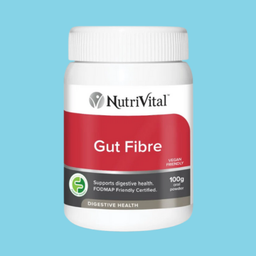What are tocotrienols? And how can they help you? Naturopath and nutritionist Dr Brad McEwen has the answers.
Lady Cilento, an early pioneer of vitamin therapy in Australia, believed vitamin E to be a powerful nutrient that could help you live longer and look younger!
Vitamin E is a fat-soluble vitamin that was discovered nearly 100 years ago, in 1922. It acts as an antioxidant in the body, preventing cell damage by inhibiting the oxidation of lipids (fats) and the formation of free radicals. Inadequate vitamin E can go undetected for a long time, which is why a vitamin E deficiency is involved in various chronic diseases.
You may already know that vitamin E has a long history of therapeutic use, thanks to this antioxidant prowess. There are strong links between oxidation, free radical damage and inflammation. All negatively impact health and influence the progression of cardiovascular disease, type 2 diabetes, osteoarthritis and neurological and cognitive conditions.
Vitamin E also protects other fat-soluble vitamins, aids in the utilisation of vitamin A, protects low-density lipoproteins (LDL cholesterol) from oxidation (oxidised LDL is implicated in the development of cardiovascular disease), inhibits blood platelet aggregation (clotting) and supports immune function.
Antioxidant family
What you may not know, however, is that vitamin E is a family of eight antioxidant compounds. These consist of four tocopherols (alpha, beta, gamma and delta) and four tocotrienols (also alpha through delta). Tocotrienols are naturally derived from several sources, including annatto, rice bran and palm. Tocotrienols are bioavailable and have been shown to deposit in lipid-rich organs, such as the brain, spleen, lung, kidney and heart, as well as in skin and adipose tissue.
About Vitamin E Molecules
Vitamin E molecules all have a ‘head’ attached to a ‘tail’. The difference between tocotrienols and tocopherols lies in this tail: whereas tocopherols are attached with a saturated tail at the C2 position, tocotrienols have three double bonds in the side chain. These double bonds, combined with the tocotrienols’ unsaturated side chain, allow for more efficient penetration into cells and tissues that have saturated fatty layers, such as the heart, brain and liver. Tocotrienols are uniquely shaped so they can reside within the lipid layers of the cell membrane, which means they can protect the integrity of the cell.
Tocotrienol Medicinal Properties
Tocotrienols have an extensive range of medicinal properties; they are antioxidant, anti-inflammatory, antibacterial, pain-relieving, cholesterol-lowering and cardioprotective. They also increase the activity of antioxidant enzymes, improve immune function, modify various inflammatory pathways, reduce thrombosis, increase insulin sensitivity and protect the liver, kidneys and cardiovascular and nervous systems.
A more powerful option
Research indicates that, compared to tocopherols, tocotrienols are around 50 times more potent as an antioxidant. This is due to their better distribution in the lipid layers of the cell membrane. Tocotrienols prevent the peroxidation of polyunsaturated fatty acids in various tissues and membranes and protect red blood cells from haemolysis (breakdown). Studies show that tocotrienols also reduce factors such as interleukins which mediate inflammation.
Due to their antioxidant activity, tocotrienols have long been used for reducing blood cholesterol levels. As previously noted, tocotrienols and tocopherols differ in the tail region of the vitamin E molecule. Tocotrienol has a farnesylated tail, which allows it to downregulate 3-hydroxy-3-methylglutaryl coenzyme A (HMG-CoA) reductase. HMG-CoA reductase is an essential enzyme for cholesterol synthesis and is a target for statin therapy. Tocopherol, on the other hand, has a longer phytyl tail without double bonds. This difference in the tail means tocopherol does not downregulate HMG-CoA reductase; however, this downregulation of HMG-CoA reductase is the action which has been shown to decrease total and low-density lipoprotein (LDL) cholesterol levels. Tocotrienols also reduce the atherogenic apolipoprotein and lipoprotein plasma levels.
Recent Trial Results
In a recent clinical trial, researchers tested the dose-dependent effects of annatto tocotrienols, ranging from 125-750mg daily, in individuals with high cholesterol. Results showed that, after only four weeks, the optimum daily dose of 250mg decreased total cholesterol by 15 per cent, LDL cholesterol by 18 per cent and triglycerides by 14 per cent. Furthermore, oxidative modification of LDL was reduced, and this significantly prevented the initiation and progression of atherosclerosis.
Dr Brad McEwen PhD is a naturopath, nutritionist, educator, and researcher.
Tocotrienols reduce the inflammation and free radical damage that negatively affect heart health.
On the horizon
Tocotrienols may benefit people with Attention Deficit Hyperactive Disorder (ADHD). This is because oxidative stress and inflammation are known causes for cellular and nervous system damage, and people with ADHD have increased oxidative stress. More research is suggested in this area.

